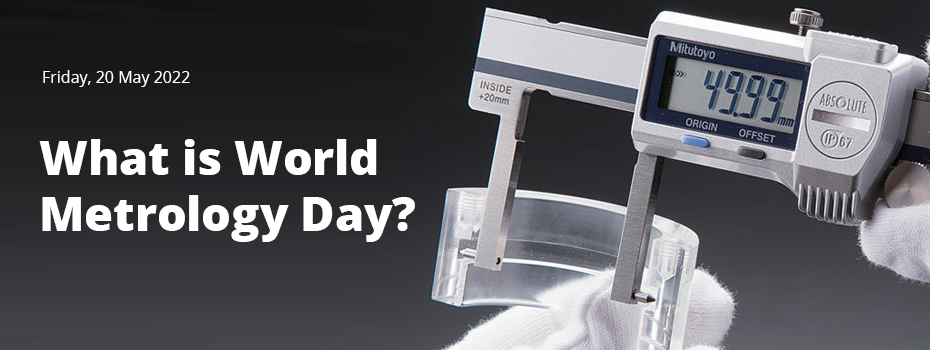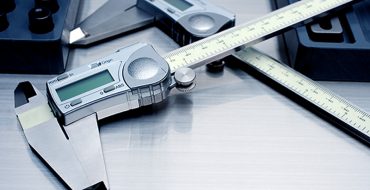
World Metrology Day raises awareness of the importance of metrology and has been celebrated every year on the 20th May since 2000. Organised by the BIPM (International Bureau of Weights and Measures) and the OIML (International Organisation of Legal Metrology), many national metrology institutes and regional metrology organisations around the globe participate in World Metrology Day[1]; for example, in 2021, thirty-six countries hosted World Metrology Day events.[2]
Quick Links:
- What is Metrology?
- What is World Metrology Day?
- Why Is World Metrology Day Important?
- Metrology in the Digital Era
- Further Information
What is Metrology?
The BIPM defines metrology as
“the science of measurement, embracing both experimental and theoretical determinations at any level of uncertainty in any field of science and technology.”[3]
Juan (Ada) Cai expands on this in the study The Case of the International Bureau of Weights and Measures, explaining that metrology is concerned with ensuring that measurements are accurate, stable, comparable, and coherent.[4]
What is World Metrology Day?
Designed to raise awareness of the importance of metrology, World Metrology Day celebrates the signing of the Metre Convention which took place on the 20th May 1875.
A (Very) Brief History of the Metre Convention
Signed on the 20th May 1875 by seventeen states, the Metre Convention is a diplomatic treaty that established the International Bureau of Weights and Measures, an inter-governmental organisation tasked with standardising systems of measurement across the world. To this day, the Metre Convention “remains the basis of international agreement on units of measurement and worldwide measurement systems.”[5]
It was born out of a need to tackle the confusion, mistrust, error, fraud, and stifling of scientific advancement brought about by a lack of standardised measurement. Prior to the metre convention, systems of measurement had been based on human morphology and included units such as the inch, hand, foot, and yard, which could all vary from human to human, town to town, and country to country. Growing trade, industry, and scientific discovery all demanded coherent, comparable measurement to be successful; to address this, politicians and scientists proposed using a unit of measurement derived from a standard evident in nature.
France’s metric system, which used a natural meter equivalent to the ten-millionth part of one-quarter of a terrestrial meridian (the distance between the North Pole and the equator), had been gaining popularity since the 1790s. Despite this, dependency on France’s original prototypes (such as the Metre Des Archives, which was eventually found to be 0.03% shorter than it should have been) to verify other countries’ national standards, together with a lack of consistency when it came to making copies of these prototypes, hindered the expansion of the metric system. In 1875 France hosted a conference in Paris to rectify these problems. At the meeting, it was established that:
- Three organisations would be set up to administer the treaty:
- The International Bureau of Weights and Measures (BIPM)
- The General Conference of Weight and Measures (CGPM)
- The International Committee for Weights and Measures (CIPM)
- Multiple identical copies of the metre and kilogram would be created and distributed to member states; one copy of each would be selected as the international master copy
- The international master copies of the metre and kilogram would be kept in the laboratory
- The laboratory would be on neutral territory
- Members would compare their copies with the master copies at regular intervals
- The organisations would promote the use of the metric system
Seventeen countries, including Austria, Belgium, Denmark, France, Germany, Italy, Norway, Russia, Spain, Sweden, Switzerland, and Turkey, signed the treaty in 1875 agreeing to the above. The United Kingdom and the Netherlands attended the conference but did not sign the Metre Convention on the 20th May 1875; however, they eventually joined in 1884 and 1929 respectively.[6]
Development of SI Units
The Metre Convention of 1875 was only concerned with standardising the kilogram and the metre. It was revised in both 1921 and 1933; firstly, to include physical measurements, and secondly, to merge electrical and photometry units into the metric system.
Many new units of measurement based on the metric system were developed during the late nineteenth and early twentieth centuries. However, measurement units used in electrical distribution systems and electrostatic and electromagnetic applications were incompatible with each other and the use of gravity in force and pressure definitions had resulted in the development of too many units. The creation of these problems meant that after the second world war the Union of Pure and Applied Physics and the French government asked the BIPM to investigate these problems.
In 1948, the 9th CGPM commissioned the CIPM to investigate the units of measurement used by member states. Based on the CIPM’s report, in 1954 the 10th CGPM decided to announce a new system of units that would include six base units:
- Metre
- Kilogram
- Second
- Ampere
- Kelvin
- Candela
Published in 1960, the 11th CGPM named the new system the International System of Units, which is abbreviated to SI based on the French name Le Systèm international d’unités. The BIPM has described the SI as “the modern metric system”.[7]
Why is World Metrology Day Important?
Metrology is integral for ensuring our quality of life and applies to almost every aspect of our existence. We rely on accurate, stable, comparable, and coherent measurements for use in industry, trade, commerce, regulation, legislation, and science. For example:
- Parameters, such as size, weight, and output voltage, must be reliably comparable between countries to ensure the success of trade and commerce
- Consumers must trust that suppliers are delivering the quantities that they say they are, e.g., litres of petrol at the pump and metered gas and electricity
- A common international timescale is critical for ensuring accurate satellite navigation positioning, enabling electronic banking, and delivering functional internet and telecommunication services; a common international timescale also enables the coordination of meetings with colleagues in different locations around the world
- Reliable, accurate, comparable, coherent measurements are essential for ensuring accurate health diagnoses
- Effective implementation of regulations and specifications relies on coherent, comparable, accurate, and stable measurement[8]
Celebrating World Metrology Day acknowledges the vital role metrology, and specifically the Metre Convention, has in ensuring a worldwide coherent measurement system upon which scientific discovery/innovation, industrial manufacturing, and international trade can be based and advanced; thereby, improving quality of life and protecting the global environment. It also highlights and recognises “the contribution of all the people that work in intergovernmental and national metrology organisations and institutions throughout the year” to develop and validate new, sophisticated measurement techniques, systems, and regulations with the view to advancing scientific discovery and global trade.[9]
Metrology in the Digital Era
Metrology in the Digital Era has been chosen as the theme for 2022’s World Metrology Day. According to World Metrology Day’s press release
“This theme [Metrology in the Digital Era] was chosen because digital technology is revolutionising our community, and is one of the most exciting trends in society today.”[10]
Metrology is evolving with the digital era. For example, new clocks can measure the second more precisely than ever; therefore, the definition of the second must be more stringent. Currently, metrologists within the BIPM including Dr Noël C. Dimarcq, a physicist and president of the BIPM’s consultative committee for time and frequency, are finalising a list of criteria which must be fulfilled for the new definition to be confirmed. Dr Dimarcq anticipates “that most [criteria] would be fulfilled by 2026, and that formal approval would happen by 2030.”[11] As new definitions of the kilogram, ampere, kelvin, and metre (approved in 2018) are all determined in relation to time, it is vital that changes to the second’s definition are made carefully and that they do not alter its duration.[12]
Further Information
As a leading UK provider of test, measurement, and calibration equipment, and as a UKAS-accredited calibration lab and service centre, the importance of metrology is not lost on us.
Please visit our website to browse our extensive range of electrical, thermal, and scientific metrology equipment, including instruments by leading brands such as Druck, Fluke, FLIR, Mitutoyo, Norbar, Kern, and Sauter. Alternatively, view our full calibration scope here.
For help and advice regarding any of our products or calibration services, please contact our team on 01642 626144 or via our online form.
Footnotes
[1] Juan (Ada) Cai, OECD/BIPM (2020), International Regulatory Co-Operation and International Organisations: The Case of the International Bureau of Weights and Measures (BIPM), (OECD and BIPM, 2020), p.18, last accessed 20 May 2022
[2] World Metrology Day, World Metrology Day Events, last accessed 20 May 2022
[3] Internet Archive, What is Metrology?, last accessed 20 May 2022
[4] Juan (Ada) Cai, OECD/BIPM (2020), pp. 12-13
[5] Juan (Ada) Cai, OECD/BIPM (2020), p. 17
[6] Information for this section was gathered using the following sources:
- Juan (Ada) Cai, OECD/BIPM (2020), p. 17
- Kiddle, Metre Convention facts for kids, last accessed 20 May 2022
- Wikipedia, Metre Convention: Membership, last accessed 20 May 2022
[7] Information for this section was gathered using the following sources:
- Kiddle, Metre Convention facts for kids: Activities, last accessed 20 May 2022
- Kiddle, Metre Convention facts for kids: Development of SI, last accessed 20 May 2022
[8] Juan (Ada) Cai, OECD/BIPM (2020), p. 13, and, Stefanie Reichert, ‘The guardians of metrology’, Nature Physics, 18.222 (2022), last accessed 20 May 2022
[9] World Metrology Day, Press Release: World Metrology Day 20 May 2022, last accessed 20 May 2022
[10] World Metrology Day, Press Release: World Metrology Day 20 May 2022
[11] Alana Mitchell, ‘Get Ready for the new, improved second’, The New York Times, last accessed 04 May 2022
[12] Alana Mitchell, ‘Get Ready for the new, improved second’



